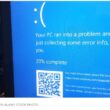How to properly tune a mobile antenna
In the first two installments of this series, we explored tactics to help the system engineer select the right mobile antenna for the job, and determine the best location for its installation. In this last article we take a look at how to tune such devices. Indeed, there has been much discussion concerning the proper tuning of a mobile antenna. One sure, positive method of precision tuning is the use of an antenna analyzer.
Once the feed line is routed, the antenna mounting base is installed and the connector is applied, simply screw the antenna onto its mounting base. Cut the antenna close to frequency but use care and avoid cutting too much away. Glue and epoxy does not work in this application.
Next, use the antenna analyzer and always sweep wider than your customer’s operating frequencies so that the analyzer will yield a performance curve that will allow you to see the upper and lower limits of the antenna’s performance. Trim the antenna for lowest standing wave ratio (SWR) or return loss for your operating frequencies. If the radio is operating on a trunking system, then tune the antenna optimally for all transmitter frequencies. If the trunked system is a multi-site system; implying that each site has different group of transmitter frequencies, the frequency list for antenna optimization can be quite large.
Antenna tuning across a large number of channels can be mediocre at best, depending on frequency spread, because some edge-of-the-band frequencies may exhibit high SWR that cannot be avoided. While some antennas are considered broadband, a sweep with an antenna analyzer will reveal just how broad it is. A simple wattmeter with slugs can be used to measure forward and reflected power; however, it will not provide the accuracy and precision of an analyzer.
Antenna selection, placement and tuning are critical to radio performance. Moreover, safety is of utmost importance. While the antenna analyzer takes up space in a technician’s tool box, so does an analog wattmeter or a screwdriver. Each tool has its place, and some are preferred by some technicians over others.
Whatever tool you use for the task at hand, be sure it’s the correct one. An antenna analyzer can aid in optimizing the tuning of your mobile or site antenna and provide a picture of true antenna performance from the highest operating frequency to the lowest.
If you are the supervisor of the radio shop you might want to consider performing quality-control (QC) checks with an antenna analyzer at random on vehicles under your watch. What you find may surprise you. Do not forget that feed lines get damaged and degrade over time and rubber ring seals under antenna bases will dry rot, which will then allow moisture to get into the antenna base or connections, compromising the antenna performance. When you change out vehicle installations, you might want to avoid re-using old antennas and mounts from the past installation. First-responder and military vehicles frequently traverse areas with low clearance, which can damage antennas and mounts. Remember that a radio will perform only as well as the antenna will allow.
Ira Wiesenfeld, P.E., has been involved with commercial radio systems since 1966, and has experience with land-mobile-radio, broadcast, paging and military communications systems. He holds an FCC general radiotelephone operator’s license, Extra Class amateur license, and is the author of Wiring for Wireless Sites, as well as many articles in various magazines. Wiesenfeld can be reached at [email protected].
Christopher Dalton has designed, staged and implemented virtually every kind of LMR system in his two-decade-long career, including conventional, trunked, simulcast, Project 25, single-site and multisite. He holds an FCC general radiotelephone operator’s license. Dalton can be reached at [email protected].

















